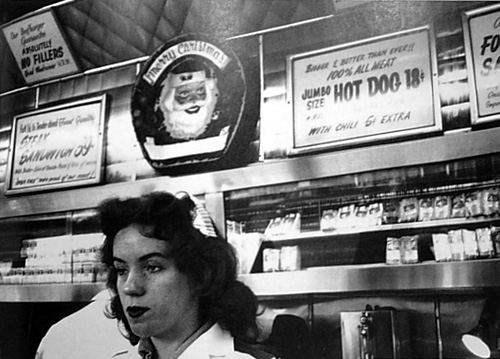 Picture by Nan Goldin
Picture by Nan GoldinI didn't know anything about either Nan Goldin or Robert Frank, and I thought these two videos did a good job at portraying their life styles. Robert Frank, was a photographer who took pictures of people who lacked touch and were isolated from the main stream public. His vision was entirely new and no one could replicate his photos. He took steps in documenting controversial topics of his time, such as African Americans when they were not considered equal to Caucasians.
Nan Goldin also documented controversial subject matters hers however, seem to be more sensual and raw. She shows the vivid truth through here photography. Frustration/tension between two lovers, addiction, trans genders and drags were some subjects of her pictures. Privately she took pictures of nature and put her own twist to the photos to create something original and eventually desired by the public.
After watching these two movies, I wonder how artists find a balance between maintaining a healthy lifestyle and getting involved emotionally and physically with their work.
-Laura LaVergne











